Our Lord in the Attic. The first time I heard the name of this tiny 17th Century Catholic church in Amsterdam, I loved it and knew I simply had to visit.
Although it was wicked cold on the day I chose, I bundled up against the bone-chilling wind and headed out to find Our Lord in the Attic (Ons Lieve Heer op Solder).
My camera had died a sudden and painful death, so I relied on my trusty phone to capture the day for me.
Armed only with a shoddy map whose creator seemed to have felt it unnecessary to be either detailed or accurate, I soon found myself very, very lost. But on such a glorious day I didn’t mind so much, for there were so many interesting things to see.
When the sun comes out in Amsterdam so do the people. Each square and cafe was filled to bursting with students and artists and tourists, soaking up every last precious ray.
As I wandered one canal after another wondering where on earth I was, I’d stumble upon marvelous sights, like the exquisitely detailed rooftops of this unknown church.
I joined complete strangers for a rest on an obliging bench, listening to them chatter in Dutch, comparing their sketches of monuments and buildings.
I wandered past workmen scaling scaffolding, Turkish men talking animatedly on the cobbled street, and a Dutch fellow working steadily on his houseboat.
I confess I was feeling a tad bit nervous as I discovered I had wandered straight into the middle of the Red Light District which, at that moment, was filled with the sort of leering, creepy chaps that scare the liver out of me. Yipes! But I wasn’t going to let a few brash fellows frighten me, so I lifted my chin, shouldered past them and pressed on.
I had nearly given up hope of ever finding Our Lord in the Attic when suddenly I looked up and there was the banner, flapping in the icy wind. Phew.
Apart from the banner, there is nothing to suggest that the building is anything more than a traditional canal house, and that’s just the way businessman Jan Hartman wanted it 350 years ago.
I climbed the steps and entered the museum, grateful to be out of the biting winds. I paid for my 8 Euro ticket (about $10.50 US or $10.22 AUD) and was given a handheld gadget that played recorded histories of the various rooms I would visit.
I was the only one there for much of my tour, an unheard of luxury in big city museums. I loved it.
The history of Our Lord in the Attic is absolutely fascinating to me.
During the Dutch Golden Age (16th-17th centuries) Protestant Amsterdam prevented Catholics from openly practicing their religion. After the transfer of power in Amsterdam to Protestants in 1578, an official prohibition on the celebration of the Catholic mass was issued.
Instead of abandoning their faith, Amsterdam’s Catholics went underground.
In 1661 wealthy merchant and Catholic Jan Hartman (1619-1668) bought the Velvet Burgwal, a prestigious property on Oudezijds Voorburgwal. With his son training for the priesthood, Hartman wanted a place where Catholics could worship in safety. The Velvet Burgwal provided the perfect place to build a secret church.
Comprised of three buildings, one in front and two behind, the Velvet Burgwal’s main floors functioned as a lavish reception room, shop, and storage area. The third floor of the front house formed a single extended attic with the top floors of the two back houses.
For over two hundred years Hartman’s attic served as the parish church for Amsterdam’s city center. While city father’s knew about the “secret” church, their policy of tolerance and Hartman’s wealth and influence secured him freedom of worship as long as he didn’t flaunt it.
Originally known as the Hart church (hart means stag), the space was renamed in the 19th century when the priest Ludovicus Reiniers bought the house. During his renovation, the stag that surmounted the facade disappeared, and the church became known as Our Lord in the Attic.
Climbing the steep, narrow staircases up into the heart of the Velvet Burgwal, I could imagine the tramp of many feet as Dutch Catholic parishioners darted in from the street and began the laborious climb into the attic.
I loved the cupboard bed in the corner and the old stove across the room. It’s so cold and damp in Amsterdam in winter that it must’ve been wonderful to crawl in bed at night and pull the curtains shut to seal in precious warmth.
I dipped my hand in the ancient font still affixed to the wall, wondering how many people had performed this ritual over the centuries.
I looked out the tiny windows to the homes across the canal, and pondered what the Golden Age residents thought of the goings on at the Velvet Burgwal.
After another few steep sets of creaky wooden steps I emerged into the sanctuary of Our Lord in the Attic.
Late afternoon sun streamed through the windows, light dancing off glossy wood surfaces and brass fixtures. I liked the old black and white photo of a church service in progress. It made the empty space come alive again.
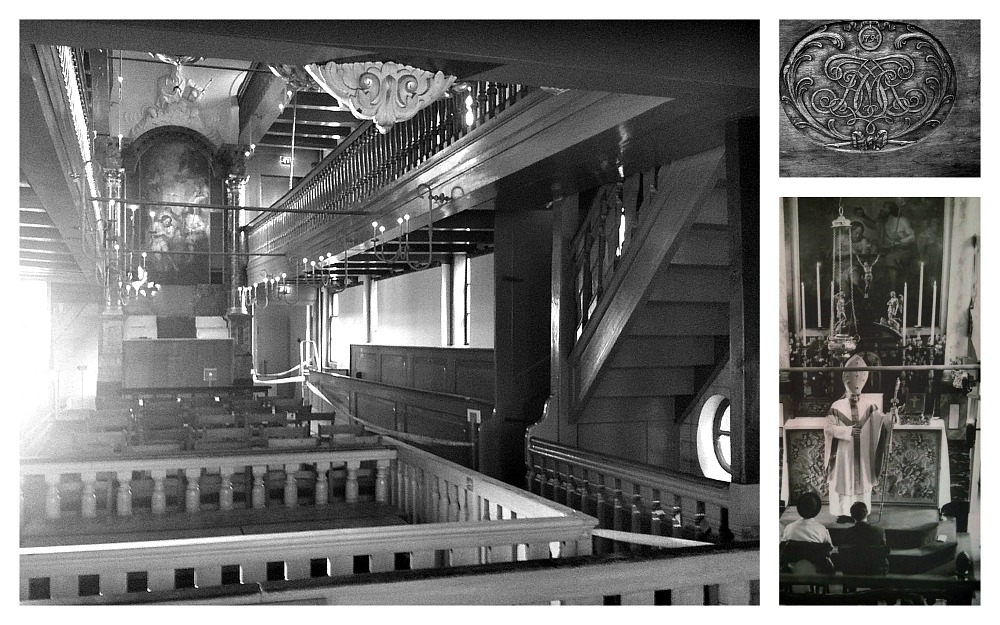 It was strange to come from the plain, simple rooms below into the opulence of this hidden church, but I liked the peaceful feeling it gave. The silence and glorious warmth brought by the sun.
It was strange to come from the plain, simple rooms below into the opulence of this hidden church, but I liked the peaceful feeling it gave. The silence and glorious warmth brought by the sun.
Our Lord in the Attic is currently undergoing a massive renovation. Plans include restoring the neighboring building and providing an underground passage to Hartman’s historical house.
Because of this, most of the facility has been gutted, with all decorations and exhibits removed. While this could be disappointing, I found it quite wonderful. It felt so much more personal with only the walls, floors and windows as they were hundreds and hundreds of years ago. My imagination ran riot, thinking of what I would do in this place if it were mine.
Next time I’ll take you into the quiet rooms of the Velvet Burgwal, where soft light and simple lines created a place of peace and refuge in the 17th century.
What is the most interesting church you’ve ever visited?
Travel Information for Museum Ons’ Lieve Heer op Solder (Our Lord in the Attic)
Oudezijds Voorburgwal 40
1012 GE Amsterdam
T +31(0)20 624 66 04
F +31(0)20 638 18 22
info@opsolder.nl
www.opsolder.nl
Hours:
Monday to Saturday 10.00 – 17.00
Sundays and public holidays 13.00 – 17.00
The museum is closed on 1 January and 30 April
Tickets:
Adults: € 8,00
Children from 6 through 18 years: € 4,00
Children from 0 through 5 years: free
Museumjaarkaart/ICOM/Stadspas/XXXS-pas: free
I amsterdam City Card: free

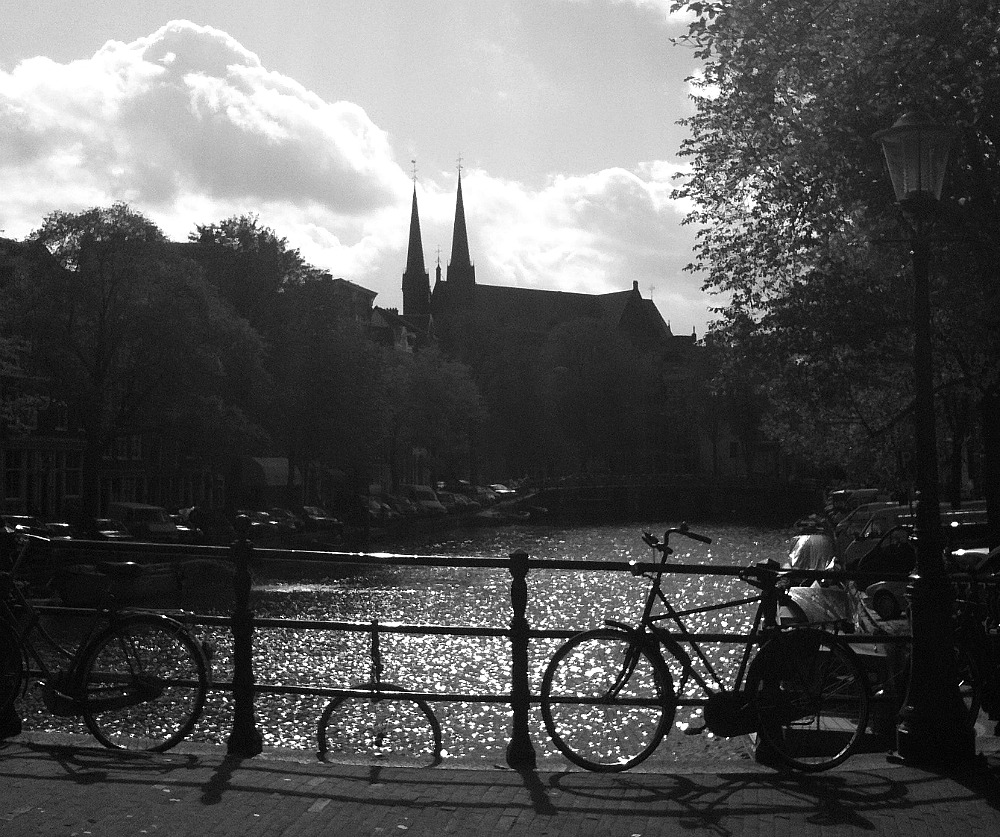
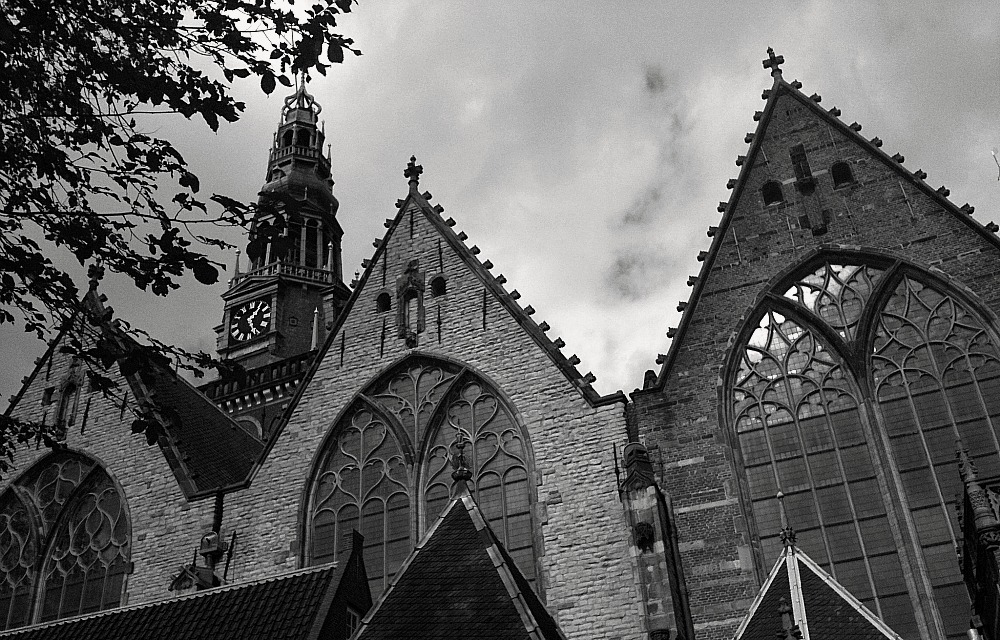
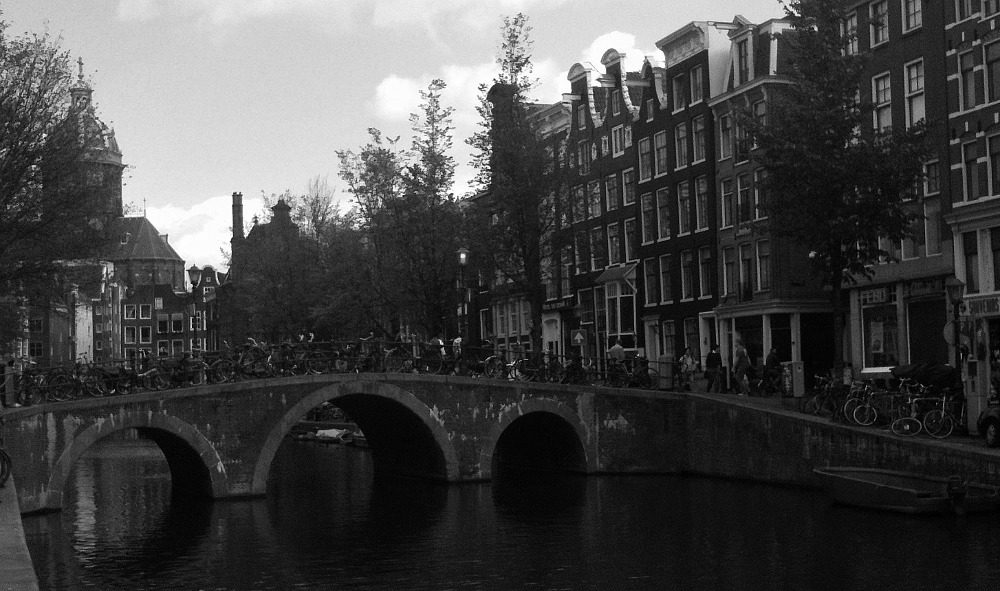
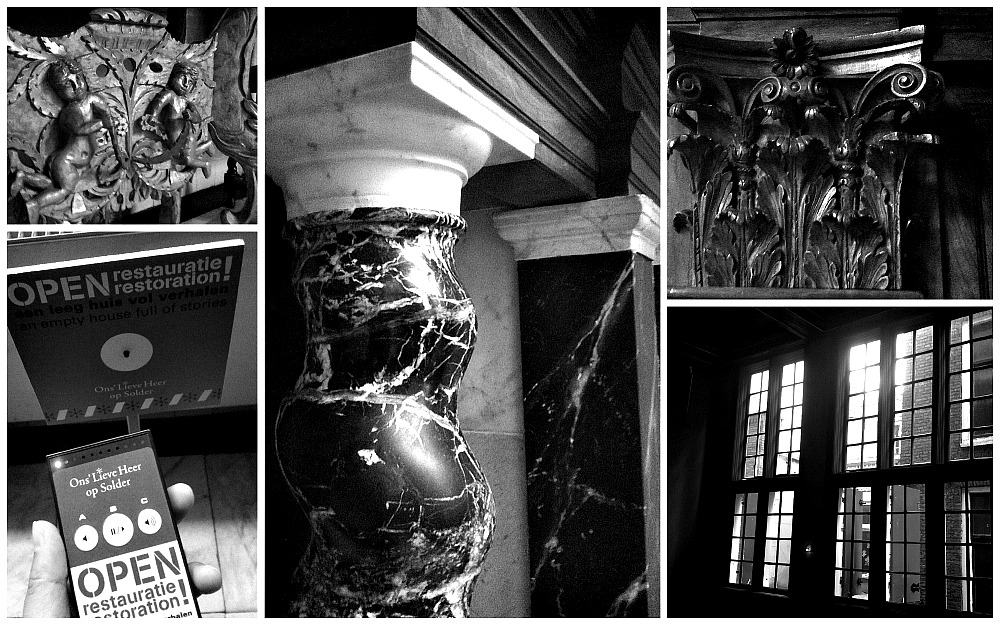
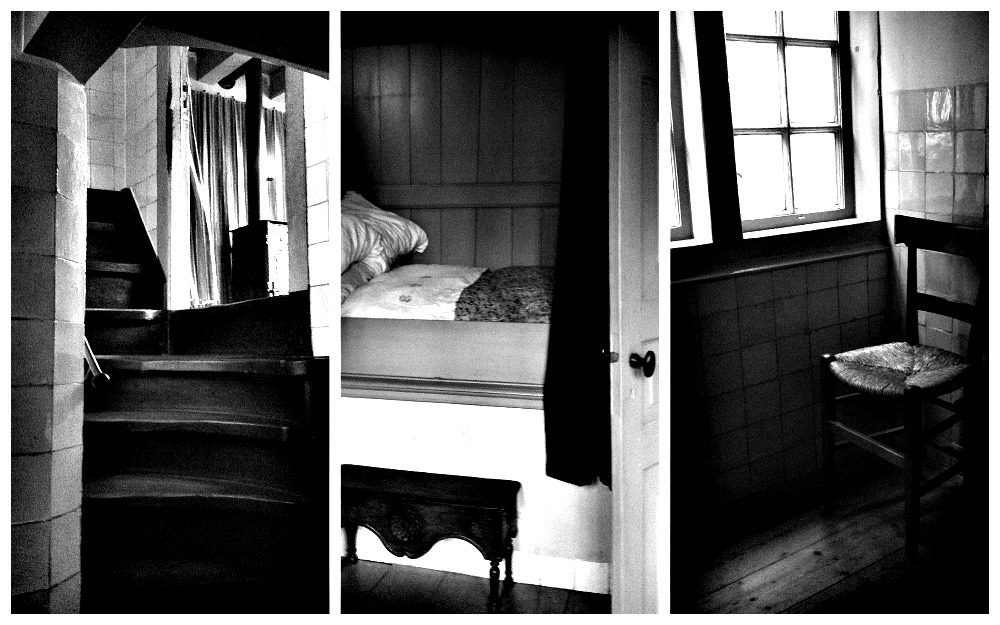
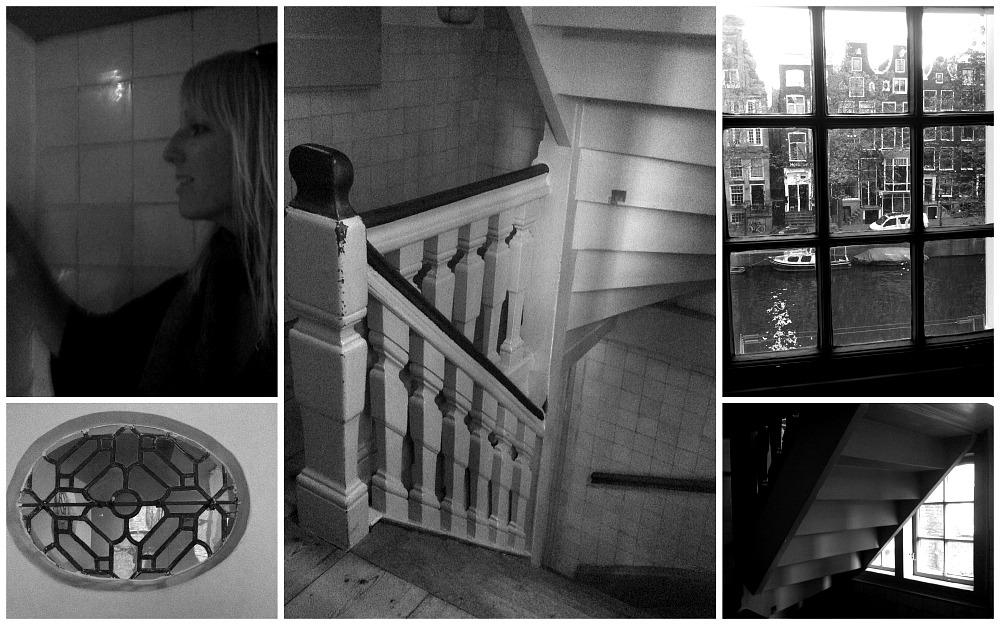
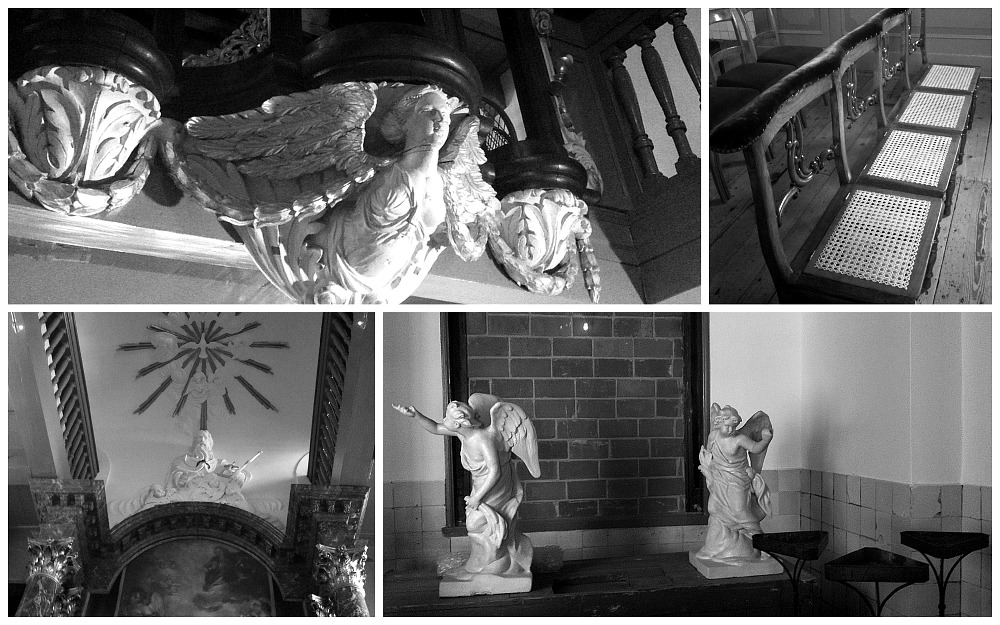
Your phone did a fine job capturing the adventure. I have had the pleasure of enjoying Amsterdam. I totally understand what an amazing and diverse city it is- Awesome!!!
I’m so glad you love Amsterdam too, Velva. 🙂 I think it is my favorite European city.
This really is a treasure Krista that you have brought to life for us.
I’m so glad you liked this little tour, Val. It is a treasure to me and I’m happy you feel the same way. 🙂
I view this as great fodder for a fiction story written around this amazing place. I too can imagine so many things just gazing at your pictures. Thanks for taking us with you, this was totally fascinating to me. Since I haven’t traveled all that much I haven’t seen a whole lot of churches outside of the US, but there is a mission just outside of Tucson, the San Xavier Mission, that is quite beautiful and very ornate. When you drive by it on the freeway it is a stark white building set with the beautiful dessert as its backdrop. I don’t have any pictures of it, the last time I was there it was 115* and it isn’t air conditioned, so picture taking wasn’t the first thing on my mind. =/
It would be a fantastic setting for a story, Melody!!! Maybe one of these days I will get to write one. I would love that! 🙂 Your San Xavier Mission sounds so beautiful. I would love to see it in such a dramatic setting. 🙂
I know exactly where you were! We walked over the same bridge… Our kids’ Grandpa was showing them the houses he lived in and his school, etc… we walked all through there but missed the Lord in the Attic tour! Thanks for showing us the photos! lovely!
Oh how fun, Susan!! 🙂 I love when things like that happen. 🙂 What an amazing place to wander with your family. 🙂
Your phone takes really nice photos, I like the black and white.
Thank you, Ayngelina. 🙂 The pics may not be as clear as with a camera, but I rather like how old world they look in black and white. 🙂
That is a very interesting name and thanks for sharing the church’s fascinating history with us – I’d brave a walk through the Red Light district too for a chance to visit 🙂 Great post Krista!
Thank you, Tuula! 🙂 I’m so glad you find it interesting too. I thought it was such a great place to explore. 🙂
I am so impressed you took all of these fantastic images with your phone Krista! I would love to go back and explore Amsterdam some more.
Thank you, Cathy! 🙂 I’m so glad they turned out as well as they did. 🙂
What an adventure you had! I am smiling at the name of this little church – so funny! But what a lovely place!
Isn’t it the best name, Katie? 🙂 It makes me grin. 🙂
I love how you turned your trip to Our Lord in the Attic into an epic adventure! It’s all captured so beautifully in these photos!
These B&W photos really capture the tranquility of the church and thank you so much for giving us an insight into the history as well. It’s been too long since I’ve visited Amsterdam!
I enjoyed every second of this post…I honestly felt like I was right there with you exploring this! I absolutely love the history behind old churches, and architecture always astounds me. Thanks for sharing your adventure with us, love!
Beautiful pictures, K! I’ve never been to Amsterdam, but some of those pics do remind me of Bruges.
I can’t believe you captured those images with a cell phone, Krista! They are so hauntingly beautiful. I just wrote down ‘The Lord is Our Attic’ because it’s now on my bucket list of places to visit before I kick the proverbial bucket lol Beautiful post as always..love how happy and serene you are now xo